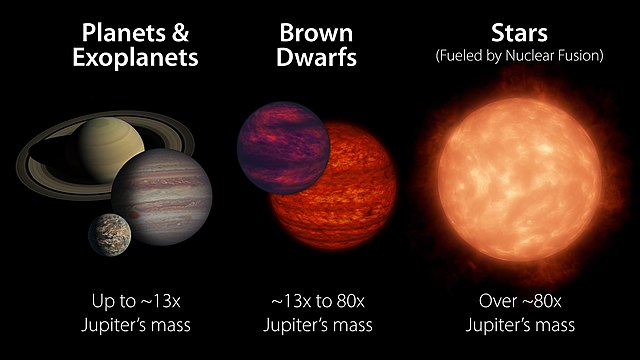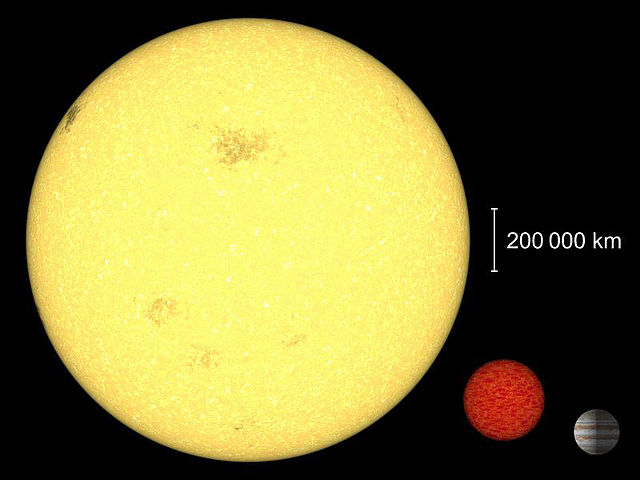An ultra-cool dwarf is a stellar or sub-stellar object that has an effective temperature lower than 2,700 K .
This category of dwarf stars was introduced in 1997 by J. Davy Kirkpatrick, Todd J. Henry, and Michael J. Irwin. It originally included very low mass M-dwarf stars with spectral types of M7 but was later expanded to encompass stars ranging from the coldest known to brown dwarfs as cool as spectral type T6.5. Altogether, ultra-cool dwarfs represent about 15% of the astronomical objects in the stellar neighborhood of the Sun. One of the best known examples is TRAPPIST-1.
Size comparison of the Sun (at left) and TRAPPIST-1 (an ultra-cool dwarf)
Brown dwarfs are substellar objects that have more mass than the biggest gas giant planets, but less than the least massive main-sequence stars. Their mass is approximately 13 to 80 times that of Jupiter (MJ)—not big enough to sustain nuclear fusion of ordinary hydrogen (1H) into helium in their cores, but massive enough to emit some light and heat from the fusion of deuterium (2H). The most massive ones can fuse lithium (7Li).
Artist's concept of a T-type brown dwarf
The smaller object is Gliese 229B, about 20 to 50 times the mass of Jupiter, orbiting the star Gliese 229. It is in the constellation Lepus, about 19 light-years from Earth.
Planets, brown dwarfs, stars (not to scale)
A size comparison between the Sun, a young sub-brown dwarf, and Jupiter. As the sub-brown dwarf ages, it will gradually cool and shrink.





